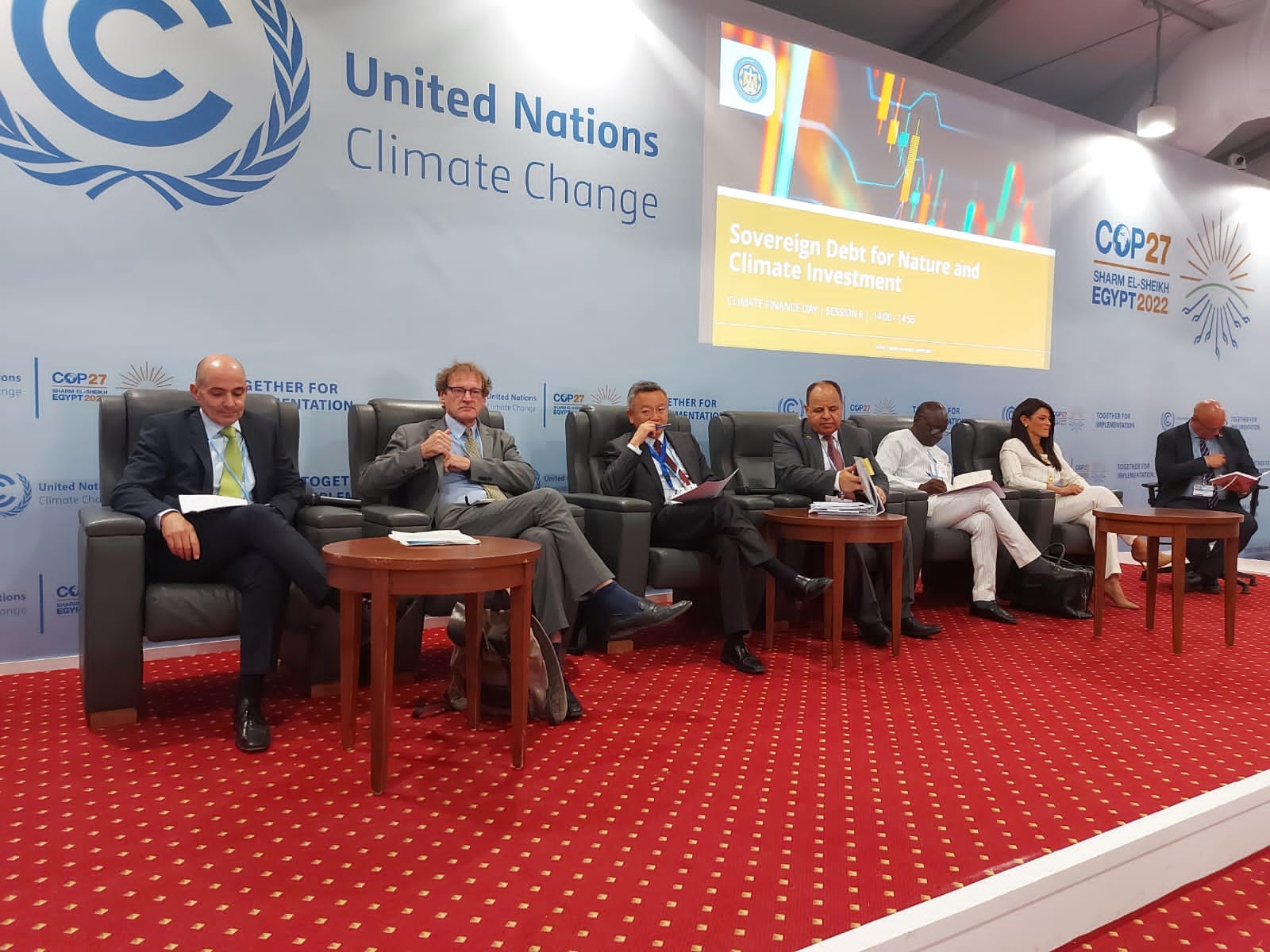The developing world takes center stage on COP27 Finance Day

The theme for Finance Day at COP27 was clear: The world needs to scale up climate financing to developing countries — and do it fast. Finance Minister Mohamed Maait was a persistent and passionate preacher on behalf of African and other emerging markets during many of yesterday’s sessions, calling for clear green financing frameworks that can take the debt burden off emerging markets’ shoulders, and for innovative financial tools to accelerate the progress of green projects.
Only 5% of global green finance goes to Africa, Maait said during one of the sessions — a miniscule figure for countries that are already carrying the burden of high debt in a high interest-rate and high inflation environment.
Climate change costs “tns, not bns”: Maait called on development finance institutions to step up with “more financing at a reasonable cost and on reasonable terms” to climate-exposed countries, in an interview with Bloomberg. A successful COP27 will drum up affordable financing for emerging markets, and will explore a ratings agency approved model that could tie sovereign debt to climate goals, he said. “The amounts required for implementation are huge,” Maait said. “Now, we are talking tns, not bns” of USD.
Egypt’s mitigation and adaptation policies will cost us some USD 250 bn, with USD 200 bn of that going to mitigation and USD 50 bn to adaptation, Maait said, without specifying the timeline for this target. We know that by 2050, the government aims to spend USD 211 bn on mitigation and USD 113 bn on adaptation, through key sectors like energy, transport, agriculture, and water.
The move from bns to tns was a key point of discussion yesterday: Everyone acknowledged that climate finance to emerging markets should be in the tns — not the bns — in the coming years, following a report yesterday that showed that developing countries will need USD 1 tn a year in external financing by the end of the decade to combat climate change.
HOW DO WE MOVE FROM “BNS TO TNS”?
Green bond issuances are important, but not feasible without guarantees: Maait pointed to the lack of guarantees offered by DFIs for green bonds as one of the key issues standing in the way of more green finance during one of the sessions. Some “95% of MDBs’ (multilateral development banks) flows are direct funding, and only 5% is directed towards guarantees,” he said, adding that this is “making our lives more difficult just because we’re African countries.” Hanan Morsy, economist and director of macroeconomic policy, forecasting, and research at the African Development Bank also pointed to the need for guarantees as well as credit enhancement for debtor countries to help them attract more green finance.
Carbon pricing is another crucial puzzle piece: A fixed carbon credit price is essential for the continent, a handful of speakers said, on the same day that the EGX announced it would set up Africa’s first carbon trading market (more on that in this morning’s Capital Markets section, above). IMF chief Kristalina Georgieva told Reuters on Monday that we need to put a minimum price tag of USD 75 a ton globally on carbon by the end of the decade for global climate goals to succeed.
Maait proposed a specialized green finance market: “Let’s work on creating a specialized market for green financing with all the tools — green bonds, green loans, green facilities — needed from MDBs to accelerate the transition,” he said. Diversifying green finance was a key talking point during yesterday’s sessions, with many officials calling for new tools to accelerate green finance to emerging markets — from debt swaps to debt-for-nature investments and blended finance programs.
We now have a debt coalition to help keep the conversation going: Maait yesterday launched the Sustainable Debt Coalition Initiative, a platform bringing together debtor and creditor countries, ratings agencies, DFIs, and MDBs in a bid to increase access to affordable green finance, reduce the cost of green debt and encourage fresh green investments among developing countries. The global coalition will work on “a set of new crucial commitments to alleviate the debt burden [on emerging markets], and launch consultations at the intersection of debt, climate, and development.”
A lot of the burden falls on MDBs: “We need MDBs to increase their capital, enhance and channel special drawing rights, and increase the level of risk-taking in their balance sheets,” Morsy said. Several speakers yesterday made the point that MDBs will need to stretch themselves to allow emerging markets to help meet global sustainable development goals.
But don’t underestimate the power of capital markets: “We rely on the sovereign wealth funds and the multilateral development institutions to support us, but given the scale needed, the only debt you will get is through capital markets,” Standard Chartered Middle East CEO Boutros Klink said. “This is the space that will provide green financing for the future.”